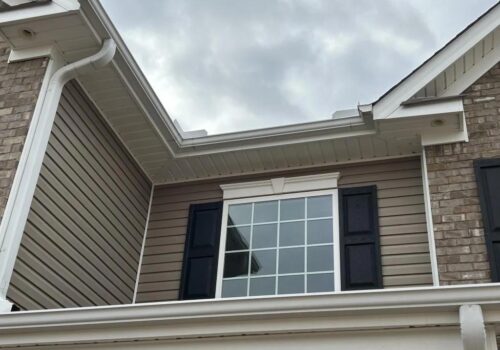Title: Enhancing the Beauty of Your Outdoor Space: Garden Landscape Ideas
Introduction:
A beautifully designed garden landscape is not only visually appealing but also plays a significant role in enhancing the overall aesthetic appeal of any property. Garden landscapes offer a tranquil escape from the hustle and bustle of daily life while providing numerous benefits to homeowners. This article will delve into the various elements of garden landscape design, explore different styles and themes, and highlight sustainable and eco-friendly practices to create an exquisite outdoor haven.
I. Elements of Garden Landscape Design:
A. Choosing the Right Plants and Trees:
To achieve a harmonious garden landscape, it is crucial to choose the right plants and trees. Consider native plants as they are well-suited to local conditions and require minimal maintenance. Additionally, assess the climate and soil conditions to ensure the selected flora thrives. Plan for year-round interest by including colorful flowers, evergreen shrubs, and trees with autumn foliage.
B. Creating a Focal Point:
Adding a focal point to your garden landscape enhances visual interest and draws attention. Incorporate statues or sculptures to add a touch of artistry, or create a soothing ambiance with a water feature. Designing an eye-catching garden pathway with intricate patterns and carefully chosen materials can also be an excellent way to create a focal point.
C. Utilizing Vertical Space:
Make the most of limited space by utilizing vertical gardening techniques. Vertical gardens and living walls can transform bare walls into lush green spaces. Climbing plants and vines can be trained to grow along trellises, fences, or pergolas, adding texture and depth. Hanging baskets and containers provide an opportunity to incorporate flowers, herbs, or even vegetables into your garden.
D. Incorporating Outdoor Structures:
Outdoor structures such as garden sheds or greenhouses can serve both functional and aesthetic purposes. They provide additional storage space for gardening tools or can be transformed into vibrant potting areas. Gazebos or pergolas offer shaded seating areas and can be adorned with climbing plants for added beauty. Finally, thoughtfully designed patios or decks create inviting spaces for relaxation or entertainment.
II. Styles and Themes for Garden Landscapes:
A. Traditional Garden Landscape:
This style embodies symmetry and features formal designs. Ornate hedges and boxwood borders create structured borders, while classic flowerbeds and topiaries provide elegant focal points. The traditional garden landscape is often associated with charm and timeless beauty.
B. Modern and Minimalist Garden Landscape:
Clean lines and geometric shapes characterize this style. Concrete and metal elements are commonly used, emphasizing simplicity and functionality. The modern garden landscape prioritizes open spaces and frequently utilizes contemporary materials to create a sleek and minimalist look.
C. Cottage Garden Landscape:
The cottage garden landscape embraces an informal and romantic design. Mixing different colors and textures creates a delightfully chaotic yet charming atmosphere. Fragrant flowers and herbs, such as roses and lavender, add an ethereal touch, while winding pathways and rustic features contribute to the overall whimsical appeal.
D. Mediterranean Garden Landscape:
Inspired by the warm and relaxed ambiance of Mediterranean regions, this style incorporates warm colors and earth tones. Drought-tolerant plants, such as lavender and olive trees, thrive in this landscape. Terracotta pots and Mediterranean-inspired decor, such as mosaic tiles, complement the Mediterranean garden landscape's rustic charm.
III. Sustainable and Eco-Friendly Garden Landscape Ideas:
A. Water Conservation Techniques:
Implementing rainwater harvesting systems, drip irrigation, and mulching are effective ways to conserve water in the garden. These techniques reduce water wastage while ensuring plants receive sufficient hydration. Xeriscaping techniques, such as using gravel or drought-tolerant plants, can also significantly minimize water usage.
B. Native Plant Selection:
Selecting native plants benefits biodiversity, as they provide habitats and food sources for local wildlife. These plants are well-adapted to the local climate and soil conditions, reducing the need for excessive care. By supporting local ecosystems, your garden becomes a haven for various creatures and promotes a healthy environment.
C. Implementing Composting and Organic Fertilizers:
Composting is an environmentally-friendly practice that enriches soil and reduces the need for chemical fertilizers. Compost improves soil health, provides essential nutrients, and enhances water retention. By reducing chemical usage, you create a safer and healthier environment for both wildlife and humans.
Conclusion:
Enhancing your outdoor space through thoughtful garden landscape design allows you to create a personalized haven while enjoying the benefits it brings. From choosing the right plants and trees to incorporating focal points and outdoor structures, the creative possibilities are endless. Exploring different styles, themes, and sustainable practices enables you to add beauty and functionality to your garden while promoting environmental consciousness. Embrace the art of garden landscape design and unlock the potential of your outdoor space.





Comments: